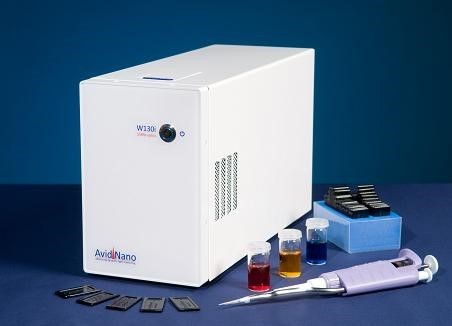Equipment: DLS AvidNano W130i
Technique: Dynamic Light Scattering (DLS)
Contact person (UNINOVA): Pedro Barquinha (pmcb@fct.unl.pt), Ana Rovisco (a.rovisco@fct.unl.pt)
Responsible: Rita Branquinho (ritasba@fct.unl.pt)
Description: Dynamic Light Scattering (DLS) is one of the most popular light scattering techniques because it allows particle sizing down to 1 nm diameter. Typical applications are emulsions, micelles, polymers, proteins, nanoparticles or colloids.
Specifications:
- Measurement range (hydrodynamic diameter): 1 – 1000 nm
- Molecular weight range: 192 Da (e.g., caffeine) — 25 MDa
- Min sample concentration: 0.1 mg/mL of lysozyme in phosphate buffer (1.9 nm radius), much lower concentration required for larger particles
- Sample cuvette types (typical):
- Blade cell, 5 µL polycarbonate disposable
- Generic 12.5 mm square-walled cuvettes, 4 clear windows
- Blade cell, 5 µL polycarbonate disposable
- Temperature control range: 0–90 °C
- Temperature control accuracy: ±0.2 °C
- Light source: 660 nm laser diode
- Detector type: Photodiode module
- Environmental conditions:Temperature range: 10–40 °C
Link for additional information: https://www.cenimat.fct.unl.pt/services/laboratory-electronic-and-optoelectronic-materials-and-devices/dynamic-light-scattering-dls-avidnano-w130i
